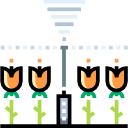Community Impact of Sustainable Urban Farming
Sustainable urban farming is transforming city landscapes and communities around the world. By integrating environmentally friendly farming methods into urban areas, cities are not only increasing local food production but also fostering stronger community ties, improving public health, and creating new opportunities for education and employment. The shift toward sustainable practices promotes resilience, helps address food insecurity, and connects residents to nature even in the heart of metropolitan environments. This page explores the far-reaching impact of sustainable urban farming on communities, examining how it enhances social, economic, environmental, and health outcomes.
Strengthening Social Connections
Fostering Collaboration Among Residents
Urban farming projects often rely on the cooperative efforts of community members, encouraging teamwork and shared responsibility. This cooperation provides a platform for neighbors to learn from one another, exchange skills, and develop networks of support. Whether planting, harvesting, or managing resources, the shared investment in the farm’s success binds participants together. Over time, these relationships create a fabric of mutual aid that can extend beyond farming, influencing aspects like neighborhood safety and advocacy.
Promoting Cultural Exchange
Urban farming spaces attract people from a variety of backgrounds, creating opportunities for cultural exchange. Gardeners frequently share seeds, heirloom crops, and traditional growing methods unique to their heritage. Seasonal festivals, potlucks, and farm-to-table dinners often showcase diverse foods and customs, fostering a deeper mutual respect and understanding among residents. As people share stories and meals alongside their harvests, urban farms become vibrant spaces celebrating cultural diversity within the city.
Providing Community Gathering Spaces
Beyond their agricultural role, urban farms and gardens act as important communal hubs for recreation and events. These green sanctuaries offer residents places to gather for workshops, educational programs, or leisurely enjoyment. Hosting arts events, local markets, or environmental campaigns, farms offer accessible venues that welcome all ages. Such gathering spaces help counteract urban isolation, giving people common ground to connect and engage in their neighborhood’s life.
Increasing Access to Fresh Produce
Urban farms supply neighborhoods with a consistent source of fresh fruits and vegetables, often distributed through farm stands, community supported agriculture, or partnerships with local markets. For many residents in densely populated areas, these farms are their only nearby source of affordable, high-quality produce. Access to fresh food encourages healthier eating habits, positively impacting public health. The reduced transportation also means vegetables are picked at peak ripeness, ensuring optimal nutrition and flavor.
Empowering Residents to Grow Their Own Food
Educational programs in urban farms teach residents the skills needed to cultivate their own fruits, herbs, and vegetables. These programs can demystify the growing process, making gardening accessible to people of all ages and backgrounds. Families learn how to start home gardens, manage small container plots, or participate in shared allotments. This empowerment fosters food sovereignty, giving individuals control over what they eat and how it’s produced, while building practical knowledge for lifelong health.
Improving Community Nutrition Outcomes
Sustainable urban farms often partner with schools, food pantries, and health clinics to integrate fresh produce into meals and educational curricula. Nutrition workshops, cooking demonstrations, and recipe sharing events help translate the harvest into nourishing meals tailored to community needs and preferences. These efforts have a measurable impact, with research showing higher produce consumption and better health markers in communities served by urban farming initiatives. The holistic approach of urban farming supports long-term wellness for entire neighborhoods.
Environmental Benefits in Urban Areas

By transforming concrete lots into lush, productive landscapes, urban farms increase green cover in cities. These spaces create habitats for pollinators, birds, and beneficial insects, bolstering urban biodiversity. The introduction of native plants and wildlife-friendly features can reverse the negative impacts of urbanization, providing ecological corridors and breeding grounds. The increased greenery also cools urban microclimates, improving comfort and reducing the heat island effect that plagues many densely built areas.
